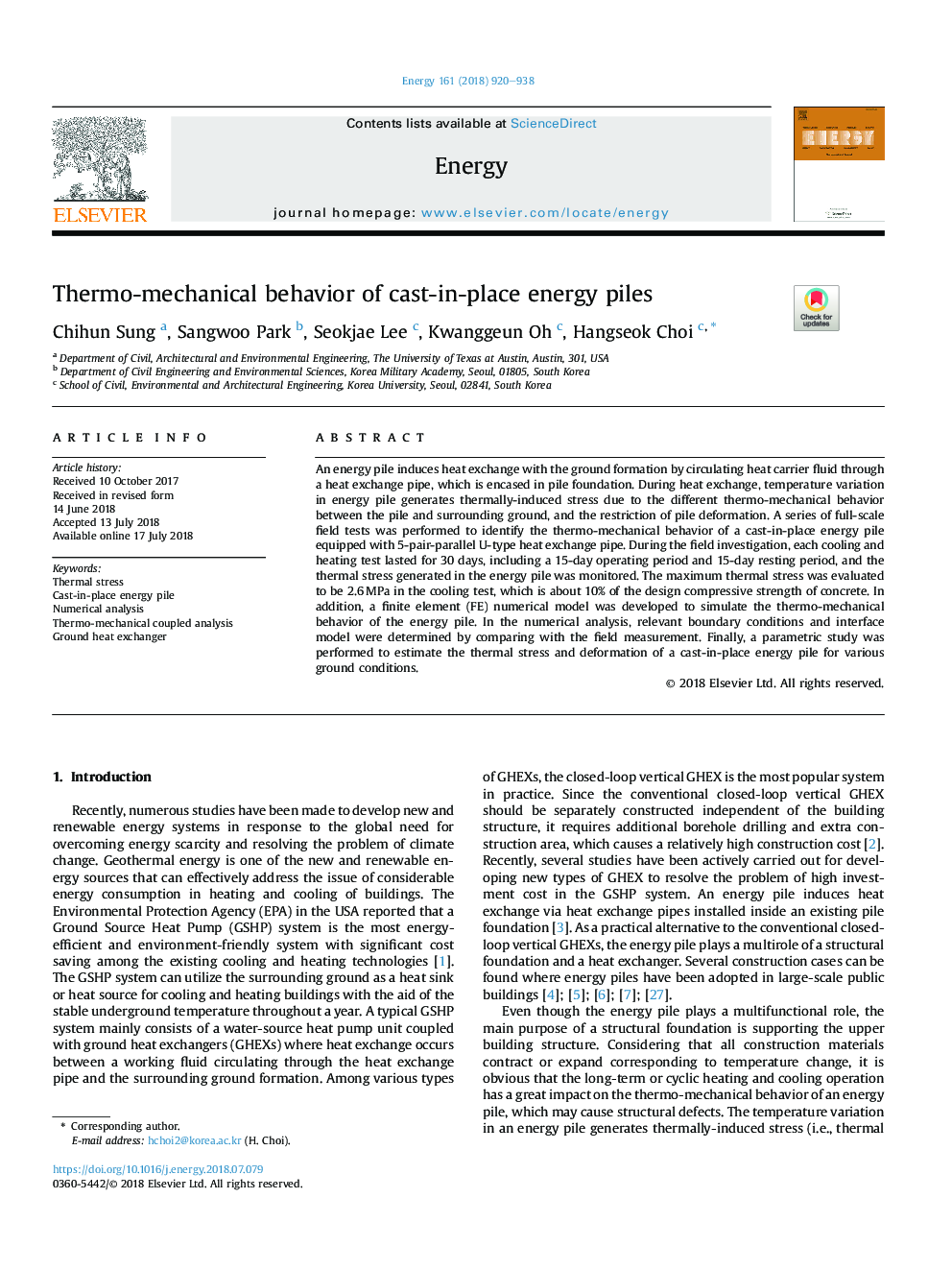| Article ID | Journal | Published Year | Pages | File Type |
|---|---|---|---|---|
| 8070897 | Energy | 2018 | 19 Pages |
Abstract
An energy pile induces heat exchange with the ground formation by circulating heat carrier fluid through a heat exchange pipe, which is encased in pile foundation. During heat exchange, temperature variation in energy pile generates thermally-induced stress due to the different thermo-mechanical behavior between the pile and surrounding ground, and the restriction of pile deformation. A series of full-scale field tests was performed to identify the thermo-mechanical behavior of a cast-in-place energy pile equipped with 5-pair-parallel U-type heat exchange pipe. During the field investigation, each cooling and heating test lasted for 30 days, including a 15-day operating period and 15-day resting period, and the thermal stress generated in the energy pile was monitored. The maximum thermal stress was evaluated to be 2.6â¯MPa in the cooling test, which is about 10% of the design compressive strength of concrete. In addition, a finite element (FE) numerical model was developed to simulate the thermo-mechanical behavior of the energy pile. In the numerical analysis, relevant boundary conditions and interface model were determined by comparing with the field measurement. Finally, a parametric study was performed to estimate the thermal stress and deformation of a cast-in-place energy pile for various ground conditions.
Related Topics
Physical Sciences and Engineering
Energy
Energy (General)
Authors
Chihun Sung, Sangwoo Park, Seokjae Lee, Kwanggeun Oh, Hangseok Choi,
